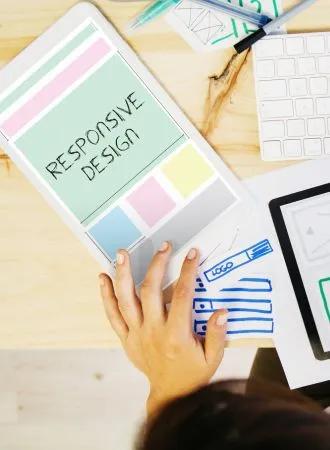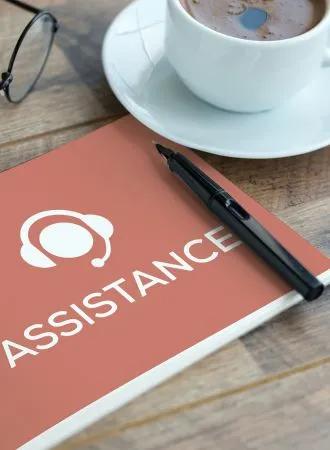Contact Us +44 20 3336 9262 (UK)
Selecting the Perfect Web Design Partner: A Guide for Small Businesses

The internet landscape is ever-evolving, and the way we interact with websites is constantly changing. While static web pages have served us well for years, they often lack the flexibility and interactivity demanded by today's dynamic online environment. Enter dynamic web pages, offering a more engaging and personalised experience for users, empowering businesses to unlock new opportunities. Let's delve into the compelling benefits of embracing dynamic web pages in 2024.
Your website is often the first point of contact between your small business and potential customers. In a competitive online landscape, having a well-designed and functional website is crucial for attracting leads, building brand credibility, and driving growth. However, finding the right web design company to turn your vision into reality can be a daunting task. Let's explore key factors to consider when choosing the ideal web design partner for your small business.

Understanding Your Needs:
Before diving into your search for a web design company, take the time to clearly define your business goals and website requirements:
- Website purpose: What is the primary function of your website? Are you looking to generate leads, sell products online, provide information, or a combination of these?
- Target audience: Who is your ideal customer? Understanding their demographics, preferences, and online behaviours will inform the website's design and functionality.
- Budget: Determine a realistic budget for your website design project. This will help narrow down your options and ensure you find a company that aligns with your financial constraints.
- Must-have functionalities: Outline what essential features your website needs (e.g., e-commerce capabilities, contact forms, live chat, blog integration).
Evaluating Web Design Companies
Once you understand your needs, it's time to assess potential web design partners. Here's what to look for:
- Portfolio and case studies: Examine their portfolio for examples of websites they have designed, paying attention to those that share a similar style or scope to your desired project. Case studies offer valuable insights into their approach, work processes, and the results they helped businesses achieve.
- Industry experience: A company with experience in your industry is a major plus. They'll understand industry-specific terminology, best practices, and target audience preferences.
- Client testimonials and reviews: Look for positive testimonials and reviews from previous clients. They provide social proof and highlight the company's strengths in communication, project management, and delivery.
- Technology stack: Find out the programming languages, technology platforms, and content management systems they are proficient in. Ensure these technologies align with your needs and allow for scalability as your business grows.
Asking the Right Questions
When you've narrowed down your options, it's time to interview potential web design companies. Here are crucial questions to ask:
- Pricing model and process: Discuss their pricing structure, including any additional or hidden costs, and how they manage the web design process from start to finish.
- Communication and collaboration: How do they plan to communicate with you throughout the project, and how will they involve you in the design and development process?
- SEO expertise: Ensure they have experience and knowledge in search engine optimization (SEO) best practices to facilitate improved search engine visibility.
- Post-launch support and maintenance: Inquire about their post-launch support and maintenance packages to ensure your website stays up-to-date, secure, and remains functional over time.
Additional Factors for Successful Partnerships
1. Define Clear Communication Channels:
- Establish preferred communication channels: Determine how you'll communicate with the web design team (e.g., email, project management tools, phone calls).
- Set communication frequency: Agree on a frequency for progress updates and project discussions, ensuring everyone is on the same page and avoiding information overload.
- Identify key point of contact: Assign a dedicated point of contact on both sides to streamline communication and decision-making.
2. Provide Detailed Project Information:
- Share your brand guidelines and style preferences: Furnish the web design team with your brand style guide, including logos, color palettes, fonts, and any brand-specific design preferences.
- Provide content and assets: Gather and prepare all necessary content like text, images, videos, or other assets the web design team will need to populate your website.
- Outline your vision and goals: Clearly communicate your vision for the website and your specific goals for the project, including desired functionalities and expected outcomes.
3. Embrace Feedback and Collaboration:
- Schedule regular review meetings: Schedule regular meetings to review design mockups, functionality prototypes, and website progress, allowing for feedback and adjustments.
- Offer constructive feedback: Be clear and specific when providing feedback, highlighting areas for improvement while also acknowledging positive aspects of the design.
- Be open to collaborative problem-solving: Approach challenges with a collaborative mindset, working openly and transparently with the web design team to find the best solutions.
4. Manage Expectations and Deadlines:
- Establish clear deadlines: Mutually agree on realistic deadlines for each project phase, ensuring both parties are accountable and working towards a clear timeline.
- Be transparent about changes: If your requirements or priorities shift during the project, communicate these changes promptly to the web design team to avoid delays or budget overruns.
- Maintain flexibility: Remain open to minor adjustments and unforeseen circumstances, understanding that unforeseen challenges can arise throughout the development process.
5. Celebrate Success and Seek Ongoing Support:
- Recognize achievements: Acknowledge the web design team's efforts and celebrate successful project milestones, fostering a positive working relationship.
- Seek ongoing support: Discuss potential post-launch support options, ensuring you have the necessary resources to maintain your website and address any future needs.
- Maintain an open line of communication: Even after the website launches, maintain an open line of communication with your web design partner for future consultations or potential updates.
Choosing the Right Fit
Remember, the best web design company for your small business isn't necessarily the most expensive or the most well-known one. Prioritise a partner who understands your business needs, communicates transparently, demonstrates relevant expertise, and offers long-term support. By carefully evaluating these factors, you'll increase your chances of finding the ideal collaborator to create a website that propels your small business toward success.




















